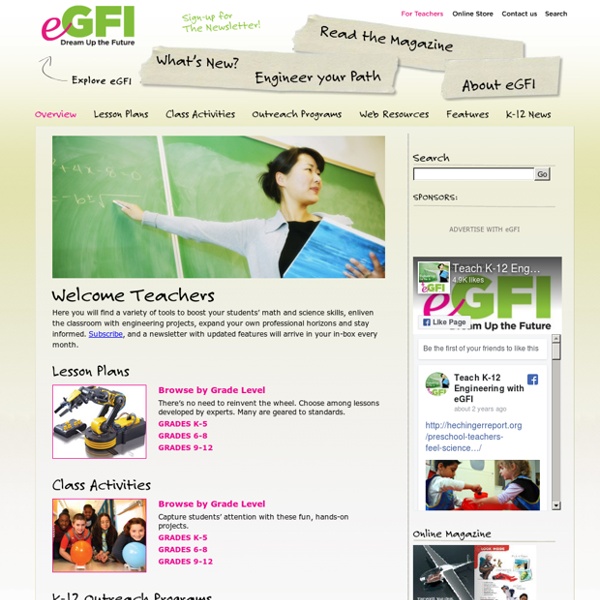



Elementary Curriculum Resources Energy Infobooks are the resource for many NEED activities and include an introduction to energy, information on major sources of energy, new technologies, energy conservation, electricity, climate change, and other energy information. They are available on four reading levels and are revised and updated annually. Blueprint for Success (e-publication) This essential gusdide helps educators develop effective energy education programs. It provides an outline of a basic energy curriculum unit and matrix of all curriculum options. also included within the Blueprint for Success is a sample work plan and suggestions for energy outreach activities to conduct other classes, schools, families, and communities. the Youth Awards Program Guide and Application Form can also be found in the Blueprint for Success. ElectroWorks Teacher GuideElectroWorks Student Guide This guide includes background information and hands-on experiments to explore the basic concepts of atomic structure and electricity.
Newton's Laws of Motion The motion of an aircraft through the air can be explained and described by physical principals discovered over 300 years ago by Sir Isaac Newton. Newton worked in many areas of mathematics and physics. He developed the theories of gravitation in 1666, when he was only 23 years old. Some twenty years later, in 1686, he presented his three laws of motion in the "Principia Mathematica Philosophiae Naturalis." The laws are shown above, and the application of these laws to aerodynamics are given on separate slides. Newton's first law states that every object will remain at rest or in uniform motion in a straight line unless compelled to change its state by the action of an external force.
Fun with the Impossible Penrose Triangle I found this delightful animation today: The ball is traveling around a shape that can’t exist in our real world: the Penrose triangle. This illusion is the basis for some cool art, like Escher’s Waterfall. And I’m using it in my Math You Can Play books as a design on the back of my playing cards: Want to Play Around with the Penrose Triangle?
Problem-Based Curriculum: Engineering Units From Boeing And Teaching Channel The Boeing Company and Teaching Channel have been working together since 2014 to create problem-based curricula inspired by the science and engineering innovations at Boeing and informed by globally competitive science, math, and literacy standards. These modules are being released as part of a collection of K-12 education resources under development to celebrate the 100th anniversary of The Boeing Company. Ten pairs of Boeing engineers were matched to ten teachers (grades 4-8) in Puget Sound, WA, and Houston, TX, to create 10 science modules. Each module is designed to be delivered in classrooms over a two-week period. These resources are intended to meet a critical need by teachers for content that integrates engineering design thinking and problem based learning – both of which are more strongly emphasized in globally benchmarked science standards (e.g., Next Generation Science Standards) that are currently being adopted or adapted by districts across the United States.
The Search for Real-World STEM Problems —Courtesy of Allison Shelley/The Verbatim Agency for American Education: Images of Teachers and Students in Action By Anne Jolly If you want to engage students and get them excited about what they are learning in science, technology, engineering, and mathematics classes, ask them to tackle a real-world problem. Then watch their amazement as they realize what they are learning in class actually has real-world applications. Working on solutions to real-world problems is the heart of any STEM investigation. These solutions may include devices and designs that improve our lives, fulfill our needs or wants, and make our world better.
Curriculum - Science / Science & Engineering Practices District Home d Sign In Register f y t Curriculum - Science 6 Virtual Tours Of The Human Body For Free Interactive Anatomy Lessons When it comes to interactive virtual views, we have gone to space and around the globe. So, it’s not surprising that we are also going within ourselves on a virtual journey of the human body. One of the finest tools available online is Visible Body. 9 Strategies for Motivating Students in Mathematics Motivating students to be (enthusiastically) receptive is one of the most important aspects of mathematics instruction and a critical aspect of the Common Core State Standards. Effective teachers should focus attention on the less interested students as well as the motivated ones. Presented in this blog post are nine techniques, based on intrinsic and extrinsic motivation, which can be used to motivate secondary school students in mathematics. Extrinsic and Intrinsic Motivation Extrinsic motivation involves rewards that occur outside the learner's control. These may include token economic rewards for good performance, peer acceptance of good performance, avoidance of "punishment" by performing well, praise for good work and so on.
A great website that provides STEM lesson plans that are more than interactive, the lessons teach with real world situations providing learners with tools they can use in the future. You can filter the lesson for grade levels. This website also has several activities offers many other resources too. by lauravennard Jul 13